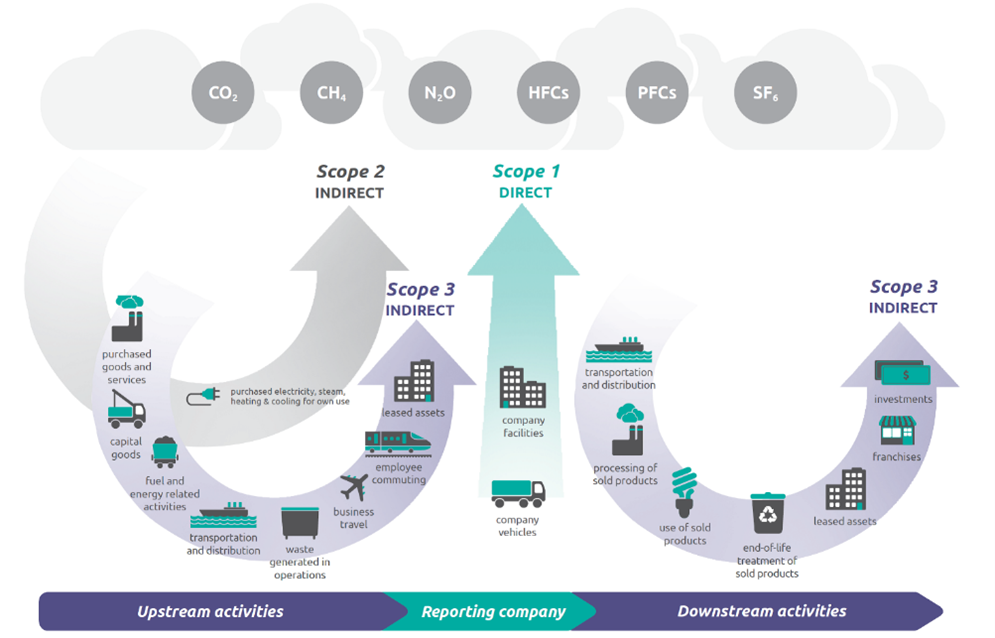Scope 3 emissions: The Do’s and Don’ts of managing your indirect footprint
Scope 3 emissions: The Do’s and Don’ts of managing your indirect footprint
When it comes to greenhouse gas (GHG) emissions, scope 3 is where things get real. These indirect emissions - spanning your entire value chain - often represent more than 70% of a company’s total footprint. And yet, they’re the most complex and misunderstood part of carbon accounting.
If you’re trying to get a handle on scope 3, here’s what you should and should not do along the way.

CONTACT US
If you’re trying to get a handle on scope 3, here’s what you should and should not do along the way.
DO: Understand what scope 3 covers
Scope 3 emissions encompass all the indirect emissions that occur throughout your value chain, both upstream and downstream. According to the GHG Protocol, these emissions are divided into 15 categories, which span from purchased goods and services to investments. To effectively address these emissions, start by mapping out which categories are applicable and most relevant to your operations before diving into detailed calculations. This strategic approach ensures a more focused and efficient effort.
DON’T: Try to cover everything at once
Attempting to calculate all 15 categories of emissions from the outset can easily lead to overwhelm. Instead, begin by conducting a materiality assessment to pinpoint the categories with the highest impact and relevance. Concentrate your initial efforts on the areas that matter most, which often include purchased goods, upstream transportation, and use-phase emissions. This targeted approach ensures a more manageable and effective starting point.DO: Start with estimates (and improve over time)
High-quality data is ideal, but don’t let perfect be the enemy of progress. It is fine to use spend-based or average data as a starting point, as long as you ensure that all assumptions and limitations are clearly documented to maintain clarity and accountability. Additionally, be transparent about the level of accuracy of your data, and communicate your plan for improvement over time to drive progress effectively.DON’T: Assume you’re powerless
While scope 3 emissions are classified as “indirect”, this does not mean a total lack of control over them. You can take meaningful actions by influencing your suppliers through procurement policies and the implementation of sustainability criteria. Additionally, engaging with customers can encourage reductions in downstream emissions. Lastly, redesigning products or packaging with a focus on minimizing carbon impact is another effective strategy to address scope 3 emissions responsibly.DO: Integrate scope 3 into your climate targets
If scope 3 represents more than 40% of your total emissions (which it usually does), you’ll need to include it in your GHG reduction targets - especially if aligning with the Science Based Targets initiative (SBTi). Set category-specific goals where possible and define clear reduction strategies - like supplier engagement, circular product design, or low-carbon transport. This approach not only ensures compliance with global standards but also demonstrates leadership in sustainable practices, fostering trust among stakeholders.DON’T: Forget to engage internally
To address scope 3 emissions effectively, internal collaboration across departments such as procurement, finance, logistics, IT and HR is essential. Highlight the strategic value of these efforts by emphasizing benefits like cost savings, risk reduction, and regulatory compliance. A simple yet impactful starting point is integrating carbon data into purchasing decisions, such as prioritizing sustainable suppliers and low-carbon materials. By fostering cross-departmental engagement and aligning on shared goals, businesses can reduce emissions while driving operational and financial value.Final thought: It’s a journey, not a checkbox
Tackling scope 3 is one of the toughest challenges in sustainability - but also one of the most rewarding. It forces organizations to look beyond their own walls and collaborate across their ecosystem. It’s a journey, not a checkbox, requiring persistence and commitment to progress. So start small, be transparent, and commit to continuous improvement. With the right approach, scope 3 goes from overwhelming to transformational.CONTACT US